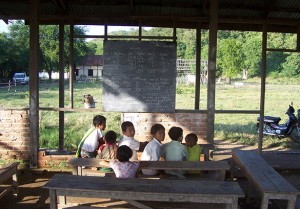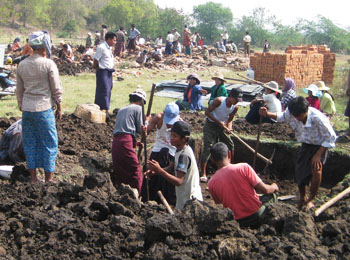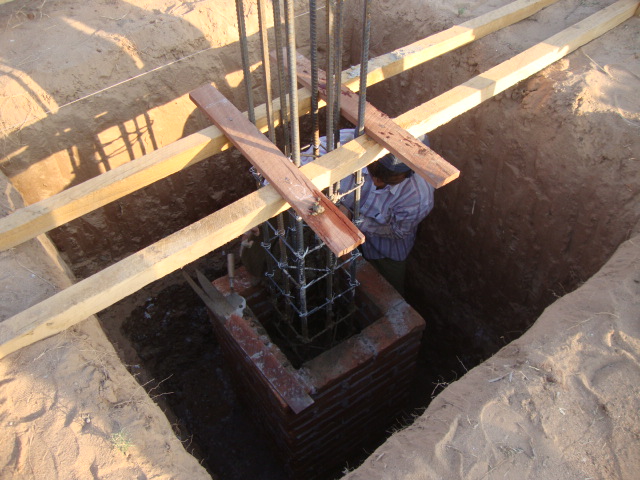Why Build New Schools In the Villages?
 Unlike in the larger towns and cities, what passes for a school in the villages is often very makeshift, with structures of no more than a corrugated tin roof supported by wooden beams without any walls.
Unlike in the larger towns and cities, what passes for a school in the villages is often very makeshift, with structures of no more than a corrugated tin roof supported by wooden beams without any walls.
Since these poorly constructed schools fail to meet the standards set by the government, the education office will only allocate from two to four teachers to a primary school (kindergarten to grade five). The salaries for additional teachers that the village needs to hire must be paid for by the villagers themselves. However, if a village does have a school which conforms to the Ministry of Education’s specifications i.e. precise classroom measurements (24’x30′), brick construction and proper toilets along with housing accommodations for the teachers, then the government will and does send a minimum of one and often two certified teachers PER grade to the school free of charge to the village. This makes our contribution a win-win situation for the villagers. They get a new school plus they get more teachers – for free.
 All we ask of the villagers themselves is that everyone (and that means everyone) helps out in whatever way they can in the actual building of the school. It’s important for them to know that when their school is finished they too played a part in it’s making.
All we ask of the villagers themselves is that everyone (and that means everyone) helps out in whatever way they can in the actual building of the school. It’s important for them to know that when their school is finished they too played a part in it’s making.

There are three kinds of schools that we are building, primary (3600sq. ft.), middle (4500sq. ft.) and high schools (9000 sq. ft.). These are quality red brick schools with strong seismic risk foundations plus one toilet for each 50 students. Depending on their location the cost to build a school is between $10 to $12 per square foot. This is a lot less than what it would normally cost because we have the advantage of having:
- a construction crew that (1) has a great deal of experience building schools , (2) harmonizes well together (3) does not waste time or materials
- the villagers, who volunteer to do the manual labor
- very little administration costs (less than 4.5%)

